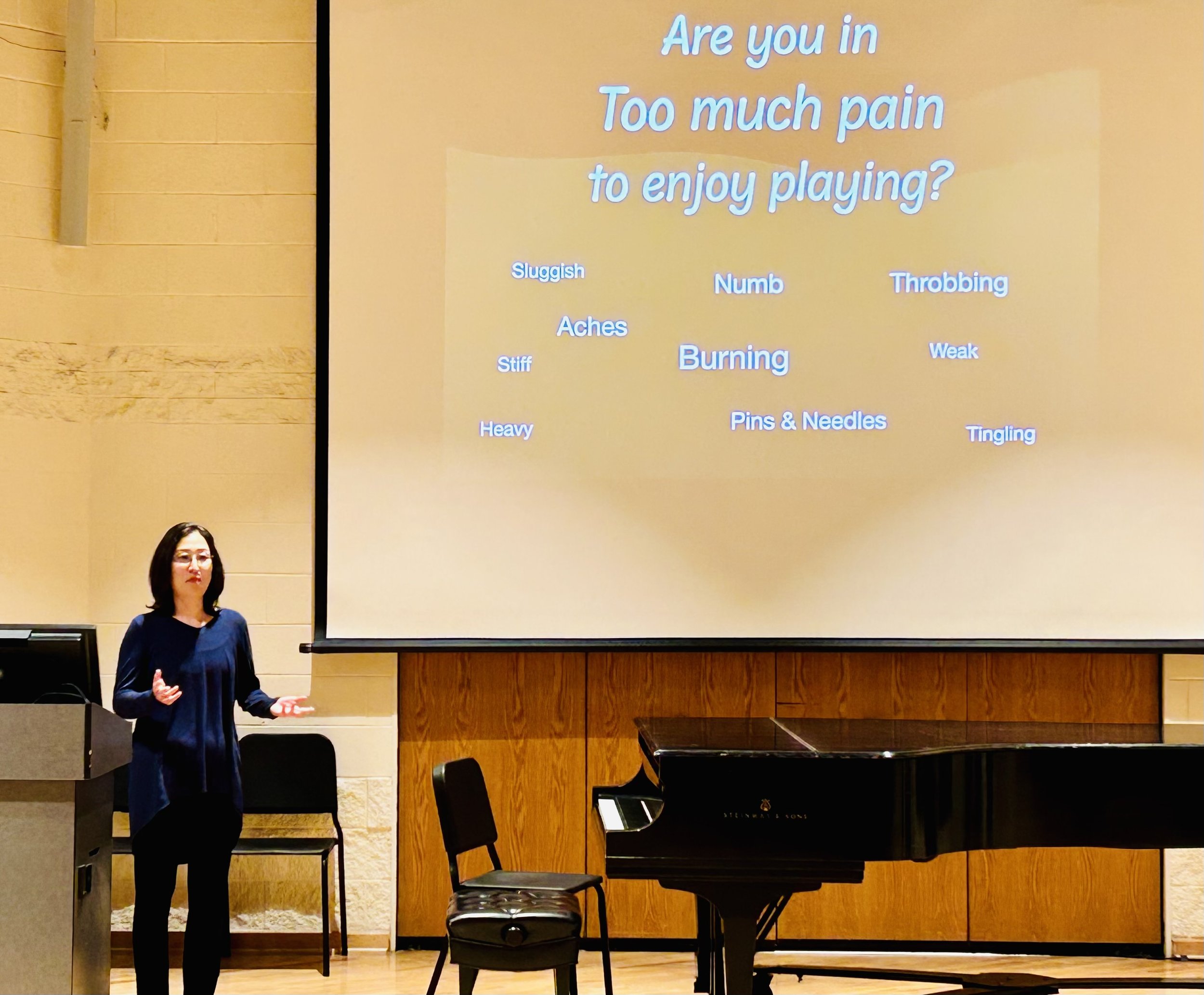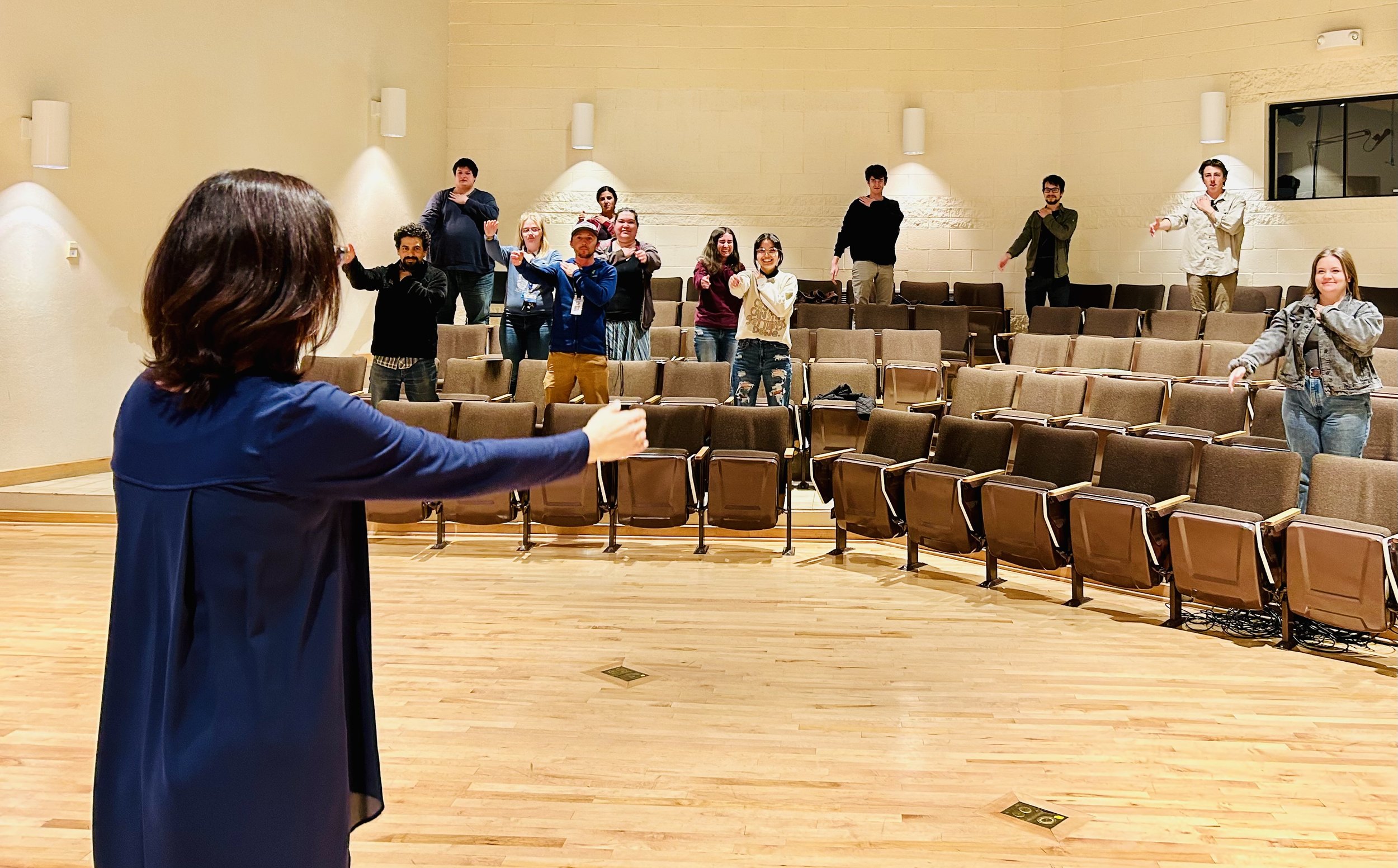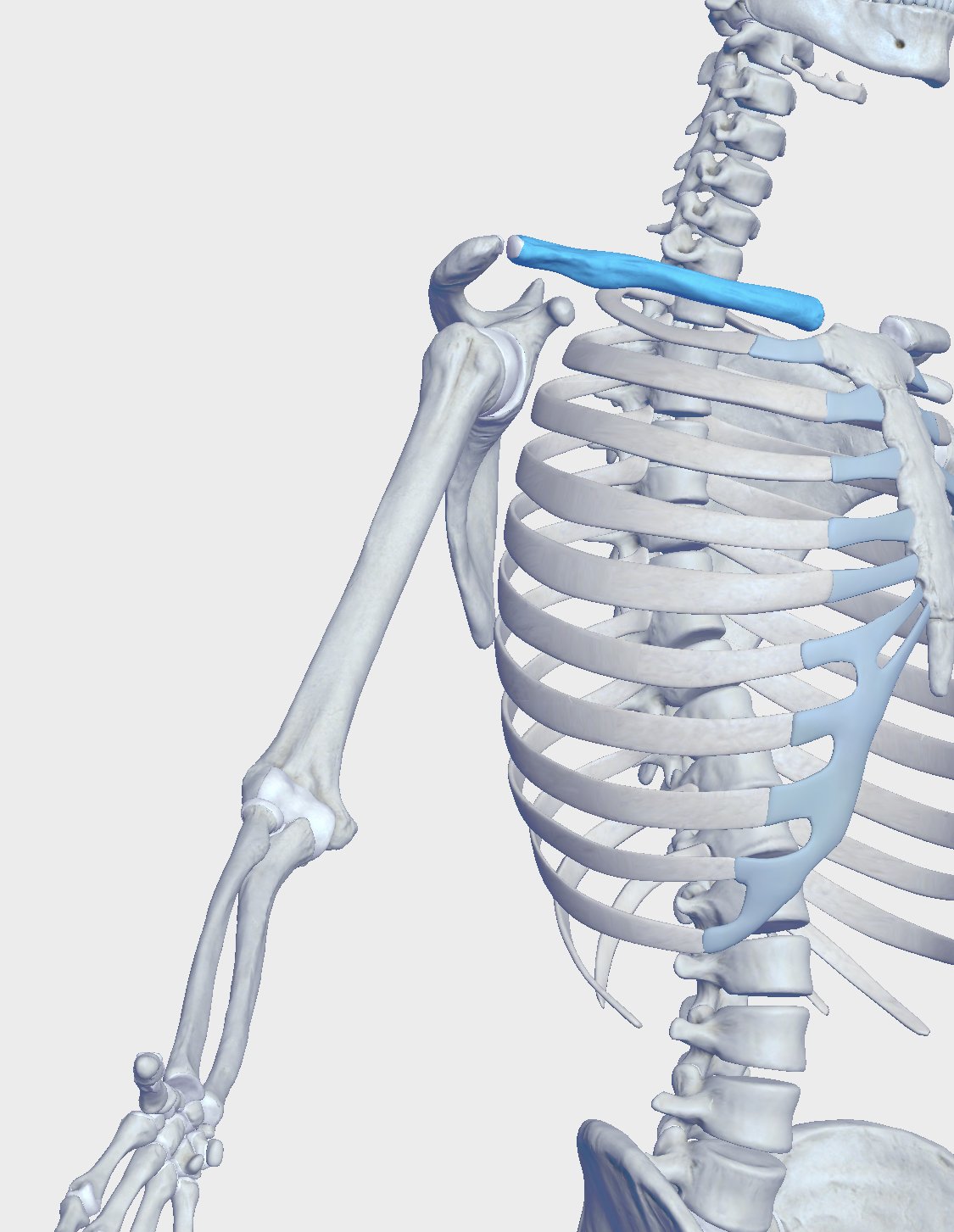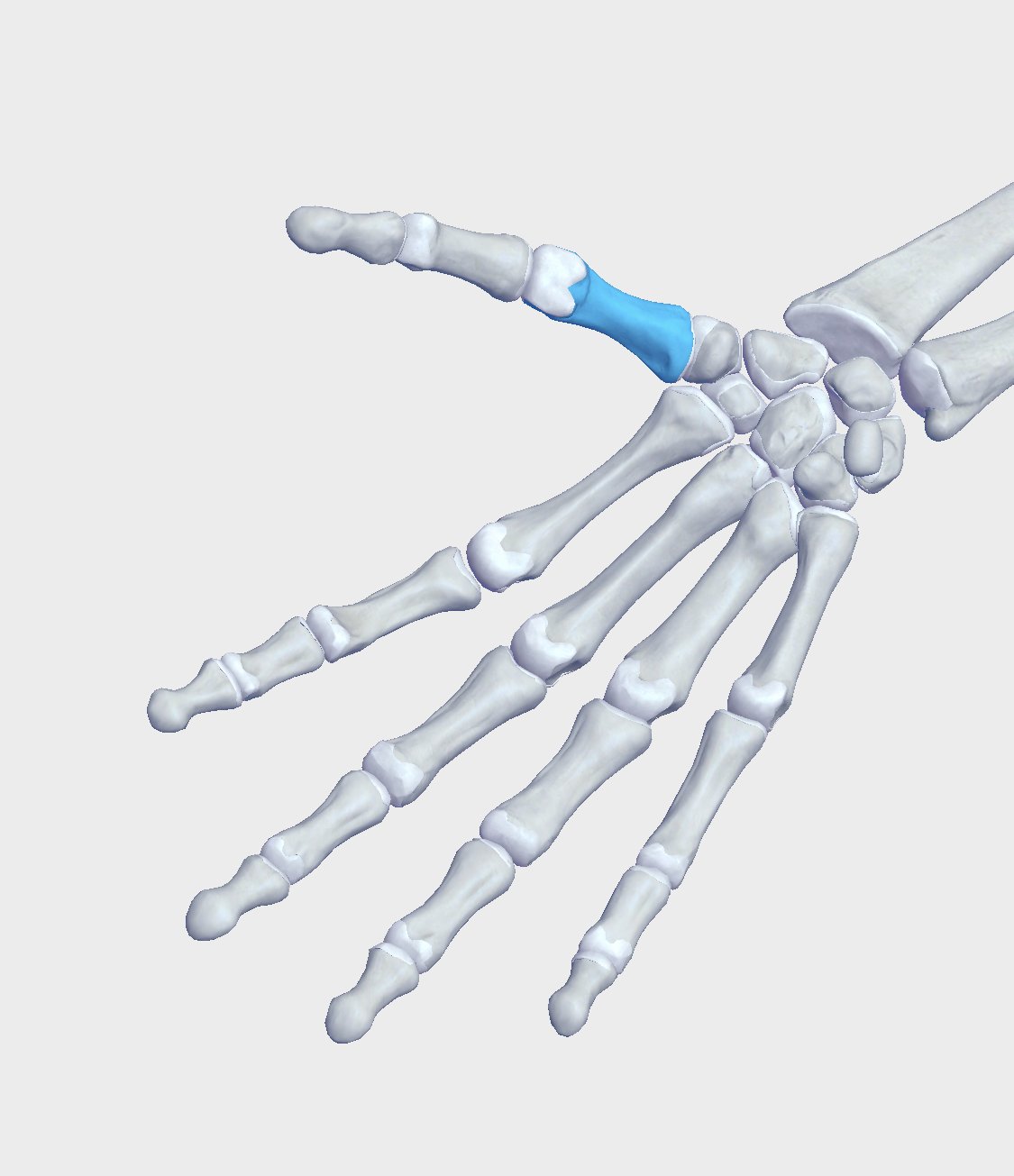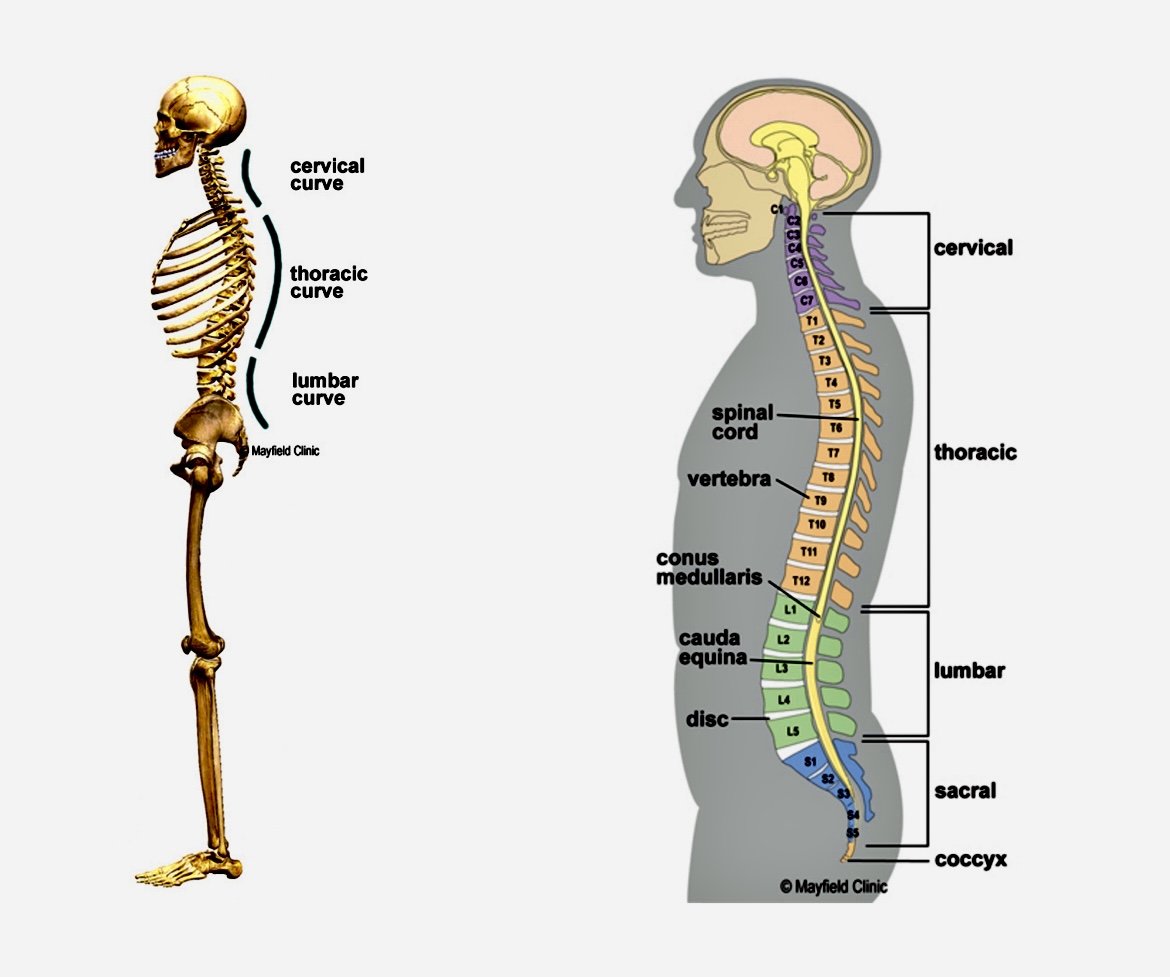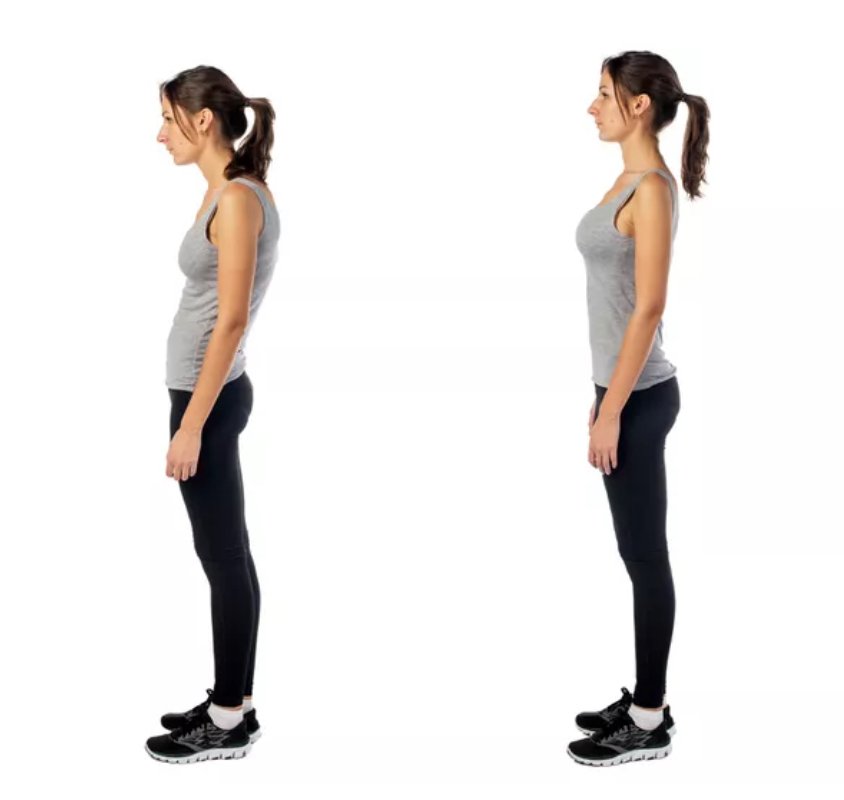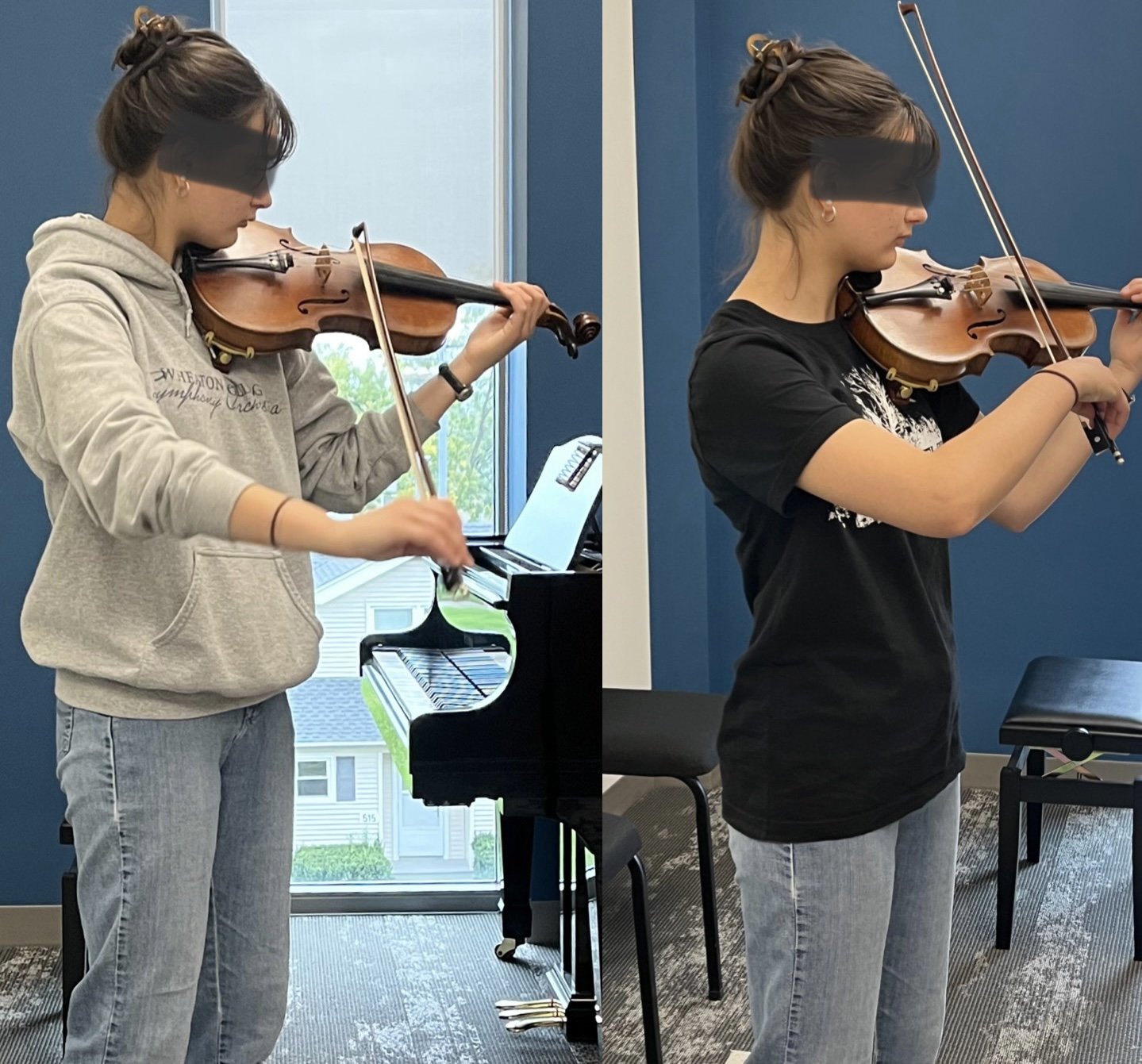“There must be an easier way of doing this…” is a great way to begin thinking about your posture, strength, support, and movement.
Getting to know how your body works
From discomfort, tension, weakness, laboring, pain, and awkward motions to freedom, poise, strength, balance, ease, and artistic movements.
Upper and lower bodies facing the same direction.
Engaging the core to support the natural thoracic spine.
Grounded feet and untwisted hips & collarbones.
What kind of sound and artistry do you imagine coming from each violinist in the before-after picture? The differences in the posture may seem subtle at first, but they make a world of difference to the playability and ease that the performer experiences as well as their sonic communication. The differences are immediate, and the pain decreases while they play.
Untwisting the hips and ribcage.
Healthy cervical spine & balanced head position.
My personal journey with injuries related to violin playing includes chronic tendonitis in the left-arm which started in 6th grade, De Quervain’s tenosynovitis in the left-hand which led to a surgery sometime after graduate school, herniated disc (L4/L5) and sciatica, nerve pain in the left-hand fingers, and migraine headaches. I also broke the ring-fingertip of my left-hand in an accident a few years ago. Each problem has been resolved, and I have learned tremendously from each experience.
If you’re tired of dealing with pain or discomfort while playing the violin, and if you don’t feel sure about your posture and movement, please contact me. I’d be happy to arrange a consultation session to take a look!
